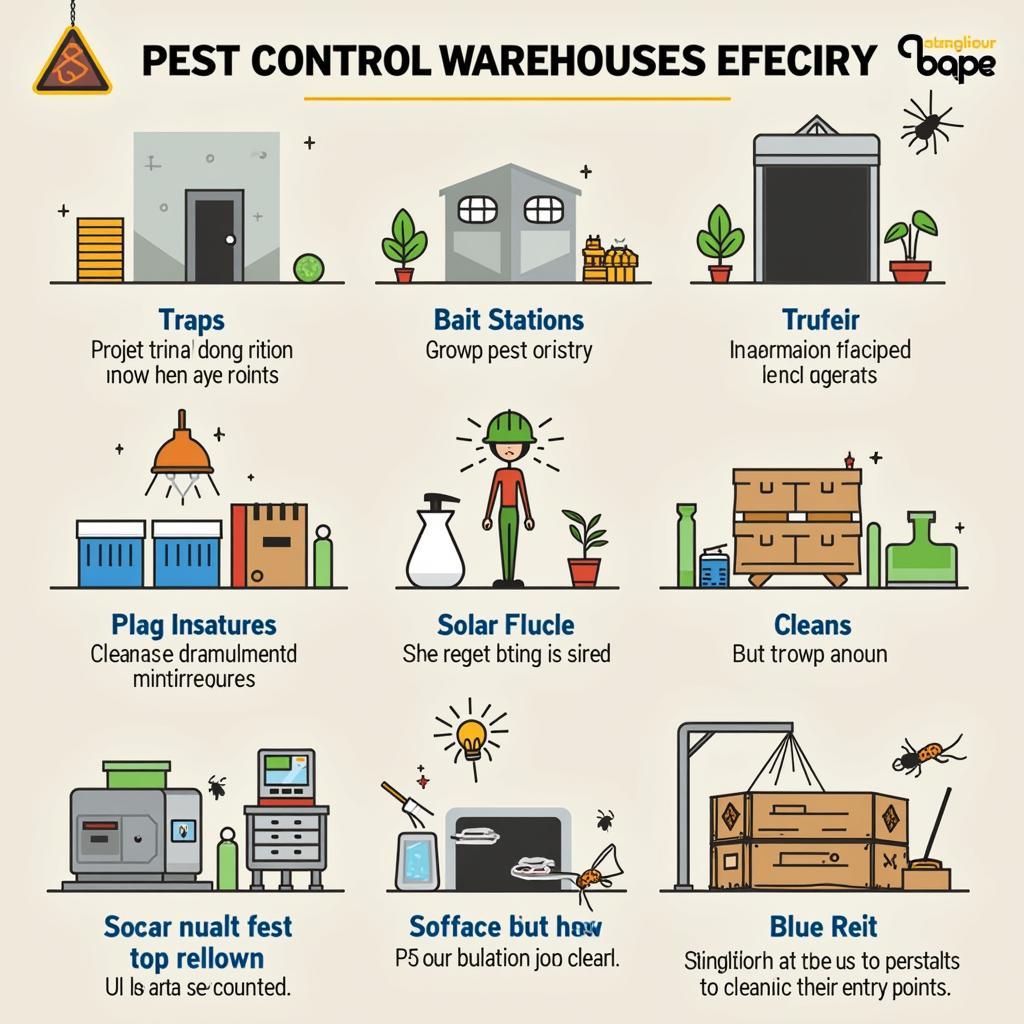Food Grade Warehouse Requirements are essential for maintaining the integrity and safety of stored food products. These requirements encompass various aspects, from building design and pest control to temperature regulation and sanitation practices. Adhering to these standards is crucial for businesses in the food industry, protecting consumers and upholding brand reputation. Learn more about the essential food grade warehouse requirements to ensure your operations meet the highest standards. Let’s explore the intricacies of maintaining a food-safe storage environment. You can also find helpful resources on industrial food storage containers.
Understanding the Importance of Food Grade Warehouse Requirements
Why are food grade warehouse requirements so important? Simply put, they are the backbone of food safety. These regulations ensure that food products remain free from contamination and maintain their quality throughout the storage process. From preventing pest infestations to controlling temperature and humidity, these requirements safeguard consumer health and protect businesses from legal and reputational damage. A food grade warehouse isn’t just a storage space; it’s a critical link in the food supply chain.
Key Elements of Food Grade Warehouse Requirements
Several key elements define a food grade warehouse. These include structural integrity, proper ventilation, pest control measures, and stringent sanitation protocols. The building itself must be designed to prevent the entry of pests and contaminants, while maintaining a suitable environment for food storage. Effective pest control programs are essential, encompassing preventative measures and reactive responses to infestations. Regular inspections and meticulous record-keeping are vital for demonstrating compliance and ensuring ongoing adherence to standards.
 Food Grade Warehouse Pest Control Measures
Food Grade Warehouse Pest Control Measures
Temperature and Humidity Control in Food Grade Warehouses
Maintaining optimal temperature and humidity levels is critical for preserving the quality and shelf life of stored food products. Different food types have specific storage requirements, and a food grade warehouse must have the capacity to accommodate these variations. Proper ventilation and insulation play a crucial role in maintaining consistent temperature and humidity, preventing spoilage and ensuring product freshness. Investing in reliable monitoring and control systems is essential for ensuring compliance and preventing costly losses due to temperature fluctuations.
Sanitation and Hygiene Practices
Stringent sanitation and hygiene practices are paramount in a food grade warehouse. Regular cleaning and disinfection of all surfaces, equipment, and storage areas are essential for preventing bacterial growth and cross-contamination. Employees must adhere to strict hygiene protocols, including handwashing and the use of protective clothing. A comprehensive sanitation plan, encompassing cleaning schedules, procedures, and training programs, is crucial for maintaining a hygienic environment and ensuring food safety. For businesses looking to streamline their supply chain, wholesale food and beverage suppliers offer a convenient solution.
Documentation and Record Keeping
Maintaining thorough documentation and records is a crucial aspect of food grade warehouse management. Detailed records of cleaning schedules, pest control activities, temperature logs, and employee training are essential for demonstrating compliance with regulations. These records also provide valuable insights into potential areas for improvement and help to identify trends or issues that may require attention. Investing in a robust inventory management system can further enhance traceability and accountability within the warehouse. You can also check out canned food delivery options for efficient restocking.
Inspections and Audits
Regular inspections and audits are vital for ensuring ongoing compliance with food grade warehouse requirements. These assessments can be conducted internally or by external auditing bodies. Inspections typically cover all aspects of warehouse operations, from building structure and pest control to sanitation practices and record keeping. Audits provide an independent evaluation of the warehouse’s compliance status and help to identify any deficiencies or areas requiring corrective action. Regular inspections and audits are essential for maintaining high standards and ensuring continued adherence to regulations. Entrust dog food with a food-grade warehouse that adheres to strict standards.
Conclusion
Food grade warehouse requirements are not just a set of rules; they are a commitment to food safety and quality. By adhering to these standards, businesses protect consumers, maintain their reputation, and contribute to a safer and more reliable food supply chain. Implementing these requirements requires a comprehensive approach, encompassing building design, pest control, temperature regulation, sanitation practices, documentation, and regular inspections. Investing in a food-grade warehouse is an investment in the future of your business and the health of your customers. Remember, adhering to food grade warehouse requirements is an ongoing process that requires continuous vigilance and a commitment to excellence. Need to find a reliable food and drink supplier? We’ve got you covered.
 Food Grade Warehouse Inspection and Audit
Food Grade Warehouse Inspection and Audit
FAQ
-
What are the basic food grade warehouse requirements?
Basic requirements include proper building construction, pest control, temperature and humidity control, sanitation, and detailed record-keeping. -
How often should a food grade warehouse be inspected?
Regular inspections, both internal and external, should be conducted, with the frequency depending on the specific regulations and the nature of the stored products. -
What are the consequences of not complying with food grade warehouse requirements?
Non-compliance can lead to product contamination, legal penalties, reputational damage, and potential health risks for consumers. -
How can I find a certified food grade warehouse?
You can search online directories, contact industry associations, or consult with logistics experts specializing in food storage. -
What is the role of pest control in a food grade warehouse?
Pest control is crucial to prevent infestations that can contaminate food products and compromise the safety of the warehouse environment. -
What are the temperature and humidity requirements for a food grade warehouse?
Specific temperature and humidity requirements vary depending on the type of food being stored but must be consistently maintained within safe ranges. -
How can I improve the sanitation practices in my food grade warehouse?
Implement a comprehensive sanitation plan including regular cleaning schedules, employee training, and the use of appropriate cleaning agents.
Common Scenarios and Questions:
Scenario: You’re storing perishable goods and notice temperature fluctuations.
Question: What steps should you take to address temperature inconsistencies in a food grade warehouse?
Scenario: You discover signs of a pest infestation.
Question: What is the protocol for handling a pest infestation in a food grade warehouse?
Further Resources:
For more information on food storage solutions, explore our articles on industrial food storage containers and canned food delivery.
Contact Us:
For any assistance or inquiries, please contact us at Phone Number: 02437655121, Email: [email protected] or visit us at 3PGH+8R9, ĐT70A, thôn Trung, Bắc Từ Liêm, Hà Nội, Việt Nam. Our customer service team is available 24/7.